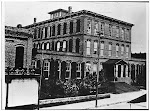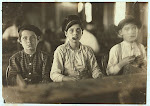The 1887-1888 epidemic would have affected the new factory town of Ybor City.
“There are two mass graves at Oaklawn Cemetery.
Ft. Brooke, Mass Grave.
Yellow Fever, Mass Grave. The second mass grave contains an undetermined number of yellow fever victims. Tampa, like many Southern coastal towns and cities, was seasonally assailed by this often-fatal form of tropical hemorrhagic fever, known throughout the South as “yellow jack,” or “bilious fever.” Tampa had five outbreaks between 1850 and 1905. The worst was 1887-1888 and – not knowing the cause of the illness – locals hastily buried victims en masse, hoping to stem contagion. Ironically a local doctor, John P. Wall (also buried at Oaklawn), was correct in suggesting that yellow fever was spread by the bite of the aedes aegypti mosquito, but he was widely disbelieved.”
Source: Wikimedia Commons “Tampa history” (http://commons.wikimedia.org/w/index.php?title=Special:Search&search=tampa+history&go=Go : accessed 25 March 2010)
John P. Wall stone:
Source of pictures:
Wikimedia Commons “Tampa history” (http://commons.wikimedia.org/w/index.php?title=Special:Search&search=tampa+history&go=Go : accessed 25 March 2010)
Wikimedia Commons “Tampa history” (http://commons.wikimedia.org/w/index.php?title=Special:Search&search=tampa+history&go=Go : accessed 25 March 2010)
Fires
Another early challenge for Tampa was fires. The original factories and clubs in Ybor City were made of wood, and many were rebuilt because of fires. The 1908 fire was particularly destructive for Ybor City.
This link is to a site that has pictures and brief information about them, including the 1886 fire which destroyed Don Vincente Ybor’s cigar factory in Key West.
http://cigarsoftampa.com/fires.html
Be sure to go to their main page for more cigar history and pictures. Good site.
http://cigarsoftampa.com/history.html
Be sure to go to their main page for more cigar history and pictures. Good site.
http://cigarsoftampa.com/history.html











